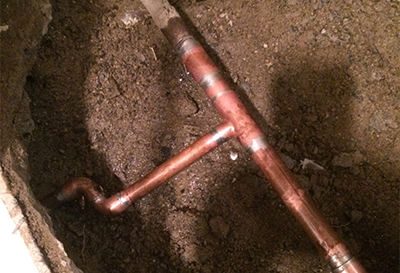Exactly how to Find and also Fixing Water Leaks-- A Comprehensive Overview
Exactly how to Find and also Fixing Water Leaks-- A Comprehensive Overview
Blog Article
How do you really feel about Detecting hidden plumbing leaks?

Early discovery of dripping water lines can alleviate a possible catastrophe. Some little water leaks might not be noticeable.
1. Take A Look At the Water Meter
Examining it is a proven way that helps you discover leaks. If it moves, that indicates a fast-moving leak. This implies you may have a sluggish leak that might even be underground.
2. Inspect Water Usage
Examine your water costs and also track your water consumption. As the one paying it, you should notice if there are any discrepancies. If you find sudden changes, despite your consumption being the same, it means that you have leaks in your plumbing system. Remember, your water costs need to drop under the exact same variety monthly. An unexpected spike in your bill indicates a fast-moving leakage.
On the other hand, a stable increase every month, despite having the exact same practices, shows you have a slow-moving leakage that's also gradually intensifying. Call a plumber to extensively inspect your home, specifically if you really feel a warm location on your floor with piping below.
3. Do a Food Coloring Test
When it comes to water usage, 30% comes from commodes. Test to see if they are running properly. Decrease flecks of food color in the container and wait 10 mins. If the color in some way infiltrates your bowl throughout that time without flushing, there's a leak between the container as well as dish.
4. Asses Exterior Lines
Don't fail to remember to examine your exterior water lines too. Should water leak out of the link, you have a loosened rubber gasket. One little leakage can throw away loads of water as well as surge your water expense.
5. Analyze the circumstance and also evaluate
Homeowners should make it a habit to check under the sink counters and even inside cabinets for any bad odor or mold growth. These two warnings show a leakage so punctual focus is called for. Doing regular examinations, also bi-annually, can conserve you from a major issue.
Check for stainings and compromising as most appliances and also pipes have a life expectancy. If you believe dripping water lines in your plumbing system, do not wait for it to intensify.
Early detection of dripping water lines can minimize a possible calamity. Some tiny water leakages might not be visible. Examining it is a guaranteed means that aids you discover leaks. One tiny leak can throw away tons of water and also surge your water expense.
If you suspect dripping water lines in your plumbing system, don't wait for it to rise.
How to Know If Your Home Has a Hidden Leak
Water Meter Reveals Inexplicable Water Usage
If you’d like to test whether or not there’s a leak somewhere in your home, you can do this using your water meter. Here is how to conduct the test:
Don’t use any water in your home for at least 30 minutes; this also means not turning on faucets or water-using appliances.
Go outside, and check your water meter for activity.
If your water meter shows that there was activity, even though no one was using any water, this proves that there is a leak in your home.Visible Mold or Mildew Growth
Leaks behind walls create moist, dark environments that allow mold and mildew to grow and thrive. Eventually, you might see mold growth forming on the wall closest to a hidden leak.
If mold is growing in an area that receives a high amount of moisture, such as a bathroom, it may simply be an indication that better ventilation is needed. However, if you see mold growth on a wall or the ceiling in an area where you would not expect, you probably have a hidden leak.
Musty, Mildew Odor
Sometimes you might not be able to see the mold or mildew that is growing as a result of a leak. However, the smell can give the problem away just as easily. If you catch a whiff of something musty, there’s a good chance that old water is collecting somewhere in your home that you can’t see.
Stained/Warped Walls, Ceilings, or Floors
When your home soaks up water, a variety of red flags can become visible, including ceiling stains, bubbling drywall, warped walls, and sagging floors. While these issues can be caused by excess humidity, they can also be signs that a pipe or plumbing connection has started leaking behind your walls.
Inexplicably High Water Bill
After a while, you get a general sense for what your water bill should be. If you own a pool or sprinkler system, your bill will tend to be higher during summer. However, if you receive a water bill that seems especially high, and you can’t figure out what caused it, then you may have a hidden leak somewhere that’s increasing your bill.
https://www.plumbingjoint.com/blog/2019/july/how-to-know-if-your-home-has-a-hidden-leak/

We hope you enjoyed reading our section about Finding hidden leaks. Thanks a ton for finding the time to read through our piece. Are you aware of someone else who is very much interested in the subject? Feel free to share it. Thank you for your time. Kindly pay a visit to our website back soon.
Report this page